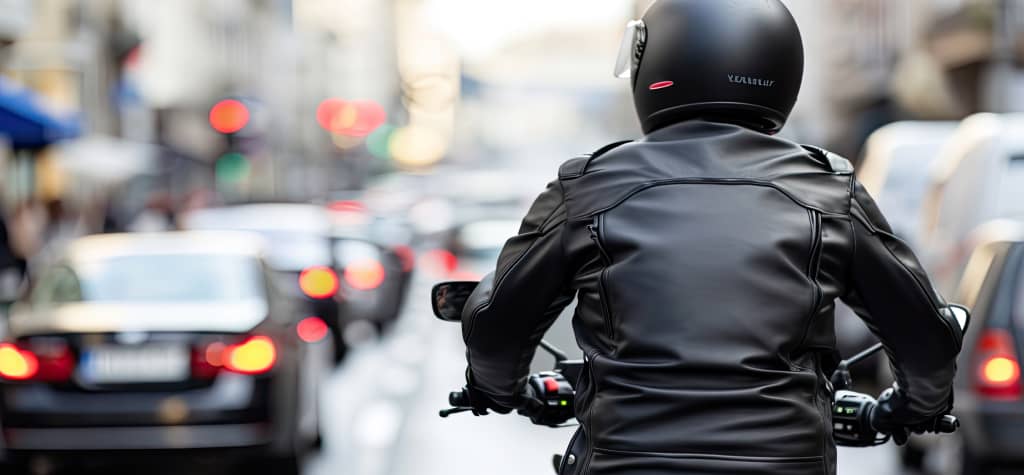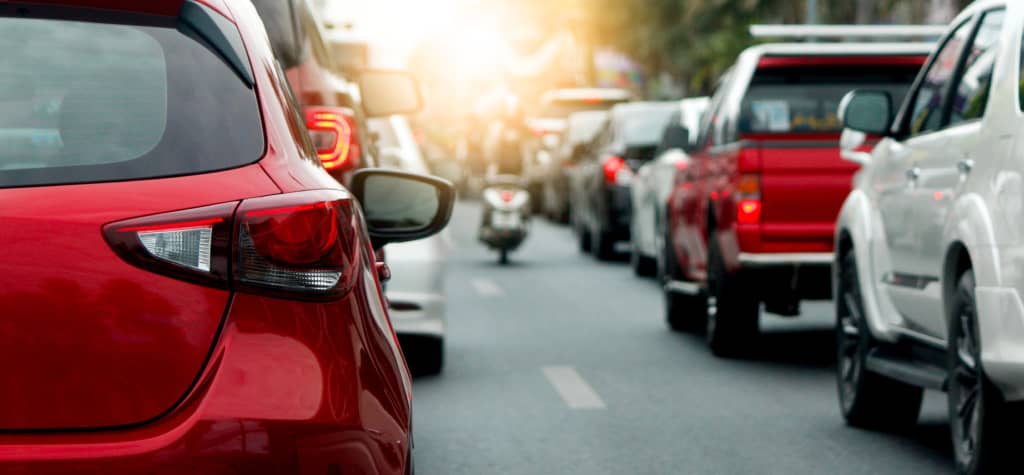Improper Denial of Insurance Coverage
It not uncommon for an insurer to deny coverage after a car accident because the driver was not listed on the policy’s declarations page. The typical fact pattern looks like ...
Keep Reading

Motorcycle deaths in Colorado recently reached the highest level on record. The Colorado Department of Transportation tallied 149 motorcycle riders killed on Colorado roadways. While motorcycles make up a small percentage of vehicles on the road, motorcycle deaths represent 20% of all car-accident-related deaths. This trend highlights the significant risk riders face. At the start of 2025, a new lane filtering law went into effect to improve safety for motorcyclists and manage traffic flow more effectively. The Colorado motorcycle accident lawyers at Bowman Law drafted this article to provide all motorists with information regarding the new motorcycle law in Colorado.
Over the years, motorcycle laws in Colorado have evolved to address safety concerns, promote technological advancements, and improve perceptions of motorcycle use. In 1967, Colorado passed a law for all motorcyclists and passengers to wear helmets. This mandate aligned with federal incentives at the time, as states that implemented helmet laws were eligible for federal highway funds. However, in 1977, Colorado repealed this universal requirement. The state shifted to a law that only required riders and passengers under the age of 18 to wear helmets. Riders 18 and older are no longer legally obligated to wear helmets. However, helmet use is still recommended for their safety.
A law mandating eye protection for all motorcyclists was also enacted. It emphasizes rider safety, as eye protection helps decrease the likelihood of accidents caused by wind, dust, or debris that impair the vision of the motorcyclist. According to the mandate, the best eye protection comes from a visor on a helmet. Riders and passengers of motorcycles can also utilize goggles and eyeglasses with lenses made from safety glass while navigating highways or local roads.
Colorado also declared a law on handlebar height restrictions, citing that motorcycle handlebars could not rise more than 15 inches above the seat. Higher handlebars can lessen the ability of the rider to securely handle the motorcycle, particularly in emergency situations. This regulation was initiated to promote better control and maneuverability of motorcycles.
Colorado then implemented a law on passenger restrictions, limiting passengers could only ride on motorcycles designed to carry more than one person. The law requires motorcycles to have a designated passenger seat and footrests if they are carrying more than one rider. Passengers must utilize the footrests, as they ensure safety, and stability of the passenger while on the motorcycle. They must also ride on the seat behind the operator or to the side, not in front.
In addition, Colorado banned lane splitting or riding between lanes of traffic moving in the same direction. The state based this resolution on concerns about the extreme dangers of accidents when motorcycles pass closely between lanes, especially at higher speeds or in moving traffic. Lane splitting has remained forbidden in Colorado to prevent catastrophic collisions from occurring.

Recently, Colorado passed a new law authorizing motorcycle riders to pass between vehicles stopped traffic and traveling the same direction. The lane filtering law, effective on August 7, 2024, allows motorcyclists to safely navigate through stopped traffic. Under Senate Bill 24-079, the rider must assess each situation to determine if they can meet the legal requirements for safe filtering.
According to the Colorado Department of Transportation, the new motorcycle lane filtering law also emphasizes that the rider may not overtake or pass on the right shoulder or by crossing over the centerline into oncoming traffic.
The Colorado motorcycle lane filtering law aims to reduce the risk of fatal or serious injuries for riders. Lane filtering minimizes the chances of a motorcyclist being rear-ended by other vehicles in stopped or slow-moving traffic. Generally, motorcycles are smaller in size and lighter than cars. As a result, rear-end collisions, even at low speeds, can eject the rider from the motorcycle, resulting in life-threatening injuries or death.
As part of this legislation, CDOT will conduct a comprehensive analysis and present the findings by the beginning of 2027 to evaluate its impact. This report will compare crash data from both before and after the implementation of the law to assess its effectiveness and safety implications, including information on motorcycle rear-end and sideswipe collisions. The law will expire in September 2027, allowing lawmakers to review the data and make informed decisions about whether to continue, modify, or discontinue the regulation.
In Colorado, motorcyclists are allowed to overtake or pass another vehicle within two lanes under specific conditions. This maneuver is permitted only if traffic is stopped, the road has lanes wide enough for a safe pass, the motorcycle is moving at 15 miles per hour or less, and overall conditions permit safe and prudent operation. These regulations are designed to ensure that motorcyclists can maneuver through traffic in a controlled and secure manner while minimizing the risk to themselves and others on the road.
Motorcycle lane filtering and lane splitting are two different practices for riders in Colorado. Lane filtering is now legal in the state, while lane splitting remains prohibited due to safety concerns.
Lane filtering permits motorcycles to move between lanes of stopped traffic at low speeds, usually at or below 15 miles per hour. This is typically done when traffic is fully stopped, such as at a red light, to let motorcycles move safely to the front. Colorado allows lane filtering under strict conditions, such as wide enough lanes to ensure safe passing and prudent riding conditions.
Meanwhile, the Colorado State Patrol defines lane splitting as the act of riding a motorcycle between lanes of moving traffic or stopped traffic traveling in the same direction. Riders perform this maneuver even when vehicles are traveling at higher speeds. Lane splitting commonly involves operating the motorcycle down the painted line that separates the lanes. Under Colorado law, this action is illegal as moving at high rates of speed between lanes can increase the chances of traffic collisions.

Lane splitting is dangerous, particularly when done at high speeds or in unsafe conditions. While lane splitting allows motorcycle riders to move between lanes to prevent traffic congestion, it also brings risks due to the close proximity to other vehicles and reduced reaction time for both motorcyclists and drivers.
Lane splitting between moving vehicles limits the time motorcyclists and drivers have to respond to abrupt changes such as changing lanes, braking, or swerving. Another factor that contributes to the hazards of lane splitting is blind spots. Several vehicles, especially large trucks, have blind spots where motorcyclists become completely invisible from the view of other motorists. Generally, drivers of larger vehicles do not expect other road users to approach from between lanes. Therefore, motorcycle riders in the blind spots are in extreme danger of being hit or not noticed during lane changes, turns, or other driving maneuvers and increase the likelihood of collisions.
Limited space also factors in. Motorcyclists have very little room to maneuver between vehicles. As a result, any sudden movement by a vehicle, such as changing lanes, swerving to avoid an obstacle, or opening a door, can cause a crash.
In addition, higher speed differences increase the risks. The larger speed differences between the motorcycle and surrounding traffic, the more dangerous lane splitting becomes. At high speeds, minor obstacles or abrupt lane changes by drivers can lead to catastrophic accidents.
At Bowman Law, we recognize the impact a personal injury can have on victims. Our lawyers specialize in Colorado motorcycle accidents. We understand the overwhelming challenges you may be facing. Do not go at it alone. Let us help. Our team of Colorado motorcycle accident lawyers provide compassionate, personalized legal representation to help you navigate this challenging time.
Our client-first approach ensures your needs are at the forefront of everything we do. We pride ourselves on transparency, integrity, and clear communication, guiding you through each step of the legal process. From initial consultation to the resolution of your case, we will guide you through the process. Our goal is to alleviate the stress of legal proceedings so you can focus on your recovery. Bowman Law has a proven record of success.
If you or a loved one has been injured due to someone else’s negligence, do not face the challenges alone. Please send us a message or call us at 720-466-5747 to schedule a free case evaluation. Remember, you have one chance at attaining full and complete justice, and we are here to ensure you seize it. Let Colorado’s top-rated Colorado motorcycle accident lawyers fight for your rights, protect your interests, and deliver the justice you deserve. We serve clients across Colorado’s Front Range and beyond, including Denver, Colorado Springs, Boulder, Fort Collins, Westminster, Lakewood, and Aurora. Call us now and take the first step toward reclaiming your life.